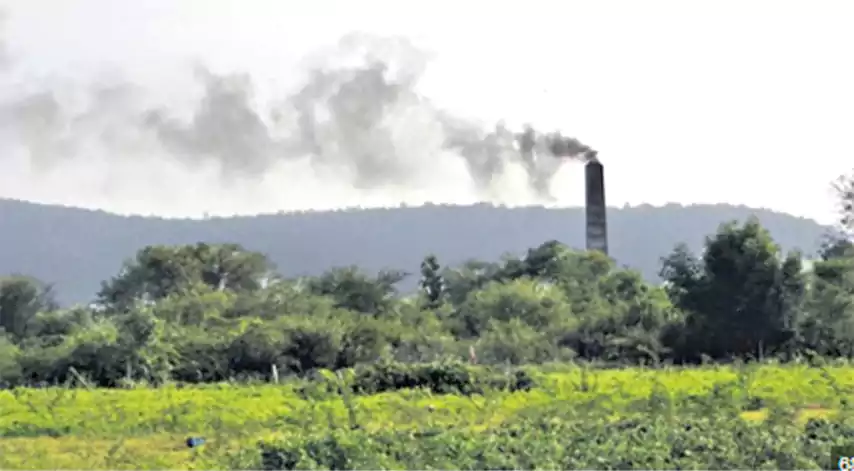Air pollution is often perceived as an urban issue, yet its impact on rural areas is just as severe, quietly undermining traditional ways of life. In Pakistan’s countryside, pollution from agricultural practices, waste burning, and traditional cooking methods increasingly harms both health and the environment.
The unseen costs of air pollution in Pakistan’s rural life, agriculture.
In an interview with APP, Dr. Naseer Memon, a climate expert, highlighted that the consequences of air pollution are profound, leading to respiratory and heart diseases while posing economic challenges that threaten the sustainability of rural lifestyles. Agriculture, which contributes about 24% to Pakistan’s GDP and employs nearly 40% of the labor force, is seriously threatened by this issue.
Dr. Memon noted that while city dwellers contend with smog from industries and traffic, rural communities face a different kind of pollution. Many villages rely on traditional cookstoves and three-stone fires, burning biomass fuels like wood and crop residue, which emit harmful fine particulate matter and toxic gases, including carbon monoxide.
Dr. Fareed Soomro, a health expert at Fatima Clinic talking to this scribe, highlighted the dangers of fine particulate matter in an interview, noting that exposure can lead to low birth weight, developmental issues, and increased risks of preterm birth. Pregnant women exposed to pollutants face heightened risks of miscarriage and complications like pre-eclampsia. For the elderly, who often have pre-existing conditions, air pollution exacerbates chronic respiratory and heart diseases, straining rural healthcare systems.
Dr. Amina, a pulmonologist, responding to a question from this scribe emphasized the seriousness of air pollution: “Chronic exposure can lead to respiratory issues like asthma, COPD, and lung cancer. Rural populations using hazardous cooking methods face unique risks. Immediate action is necessary to protect these communities and prevent worsening respiratory diseases.”
Pollutants from traditional cooking practices harm health and contribute to environmental degradation, negatively impacting agricultural productivity. Studies show that air pollution can reduce crop yields by 10-30% for staple crops like wheat and rice, vital to Pakistan’s food security. Increased particulate matter hinders photosynthesis and degrades soil health, resulting in less resilient crops.
A report from the Pakistan Meteorological Department noted that changing weather patterns, worsened by air pollution, are causing erratic rainfall and rising temperatures, threatening agricultural output. Cotton, a major cash crop, is particularly sensitive to air quality; pollution can reduce fiber quality and yield, affecting farmers’ incomes and the textile industry.
Tackling air pollution in rural areas requires comprehensive action. Climate expert Naseer Memon suggests enforcing emission standards and promoting cleaner technologies in both urban and rural settings. He emphasizes adopting improved cookstoves and alternative fuels to reduce indoor air pollution.
Memon also advocates for better waste management, including banning open burning of trash and crop residues, and promoting biodegradable materials and recycling to lower pollution levels. Education campaigns raising awareness about air pollution’s health risks and encouraging practices like carpooling can also help.
The impact of air pollution on rural Pakistan is a crisis that remains largely overlooked, with devastating effects. Environmental degradation exacerbates climate change, impacting agriculture through erratic weather, diminishing water resources, and reducing crop yields. Deforestation for firewood strips land of natural defenses, making communities more vulnerable to floods and droughts.
Lumberdar Raja Tasdique, a known farmer from Gujar Khan, shared his concerns, “After two decades in this community, I’ve watched air pollution suffocate our crops and way of life. Soil health is declining, making it harder to grow produce. We’re seeing more respiratory issues, especially among children and the elderly. When pollution thickens the air, it harms our entire community. We need to prioritize clean air for our health and the future of farming.”
“As a villager, I’m deeply worried about the health of my family, especially my 70-year-old mother, who struggles with respiratory issues. It’s heartbreaking to see her suffer because of the rising air pollution that we have no control over. Our community didn’t create this problem, yet we bear the burden. We lack the resources and knowledge to combat these challenges effectively. We need support and education on cleaner practices and technologies. It’s crucial for our health and future that we find ways to address this pollution together” Ghulam Murtaza a student and resident of Daultala village sharing his ordeal with this scribe remarked.









